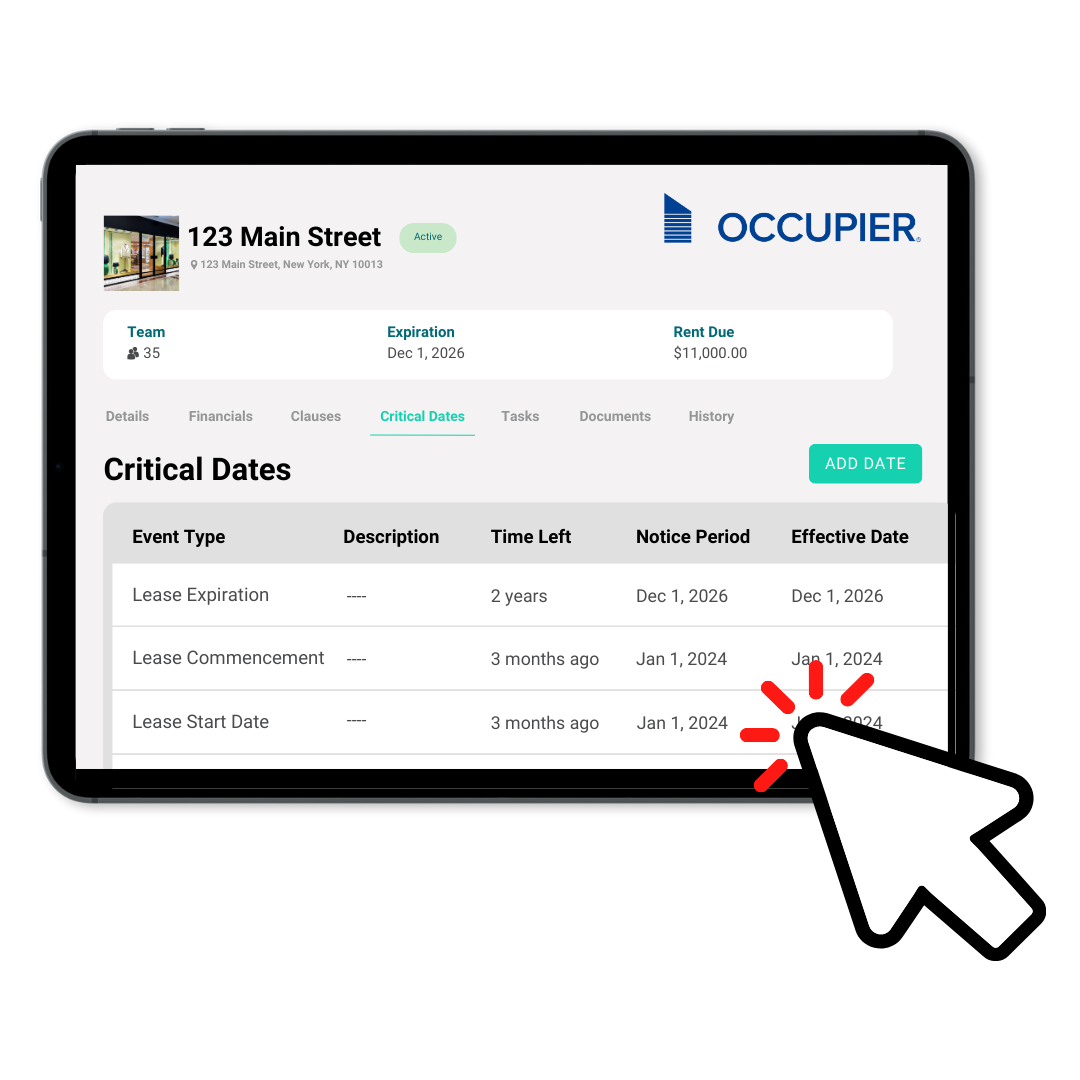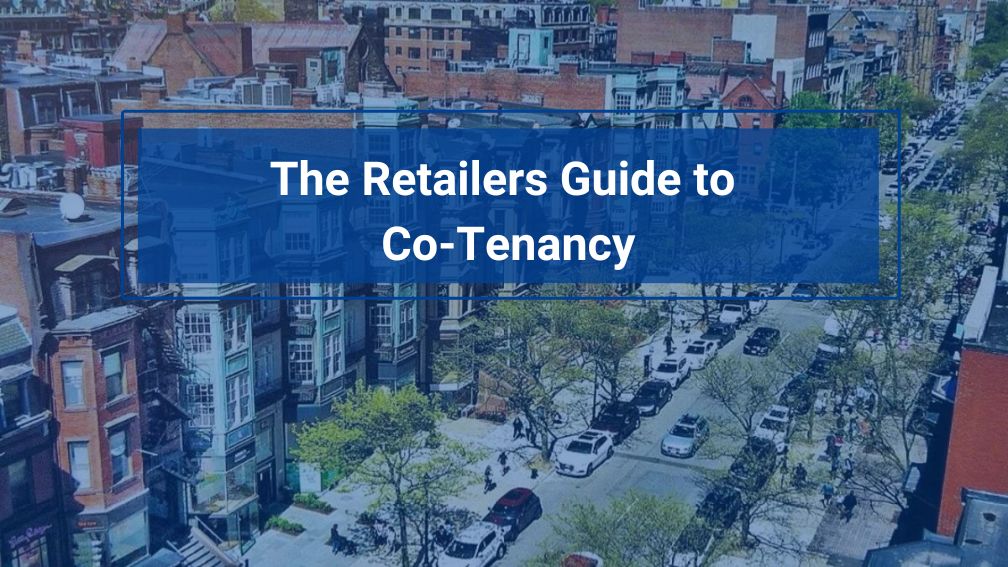The Co-Tenancy Guide For Retailers
Last Updated on May 9, 2024 by Morgan Beard
Hey there retailer — If you’re a brick & mortar champion looking for creative ways to co-brand and cut rent expenses, well, then co-tenancy is your solution. In this co-tenancy guide for retailers, we’ll outline the keys to this lease provision and how to leverage it for retail real estate success.
What is Co-Tenancy?
Co-tenancy is when multiple retailers join forces and operate out of a shared space like a shopping mall or commercial center. Think of it as having retail roommates – you’ll split the costs and responsibilities, but hopefully avoid any battles over whose turn it is to take out the trash.
When you have complementary or popular co-tenants, it can lead to increased foot traffic that benefits all businesses. Conversely, high vacancy rates or an unfavorable tenant mix can hamper your ability to maximize sales. A Co-tenancy clause stipulates that certain conditions must be met regarding the occupancy or leasing status of neighboring or anchor tenants within the same retail complex or building.
Here’s how it typically works: If a specified anchor tenant or a certain percentage of the retail space within the property remains vacant or un-leased for a specified period, it may trigger certain rights or remedies for the tenant(s) with the co-tenancy clause. These rights could include rent reductions, lease termination options, or other concessions.
Outside of the legalities and rights of a co-tenancy clause, it also offers a unique retail strategy for brick & mortar success. Now you may be wondering how, exactly? Well, this blog will dive into that. In short, co-tenancy can be an angle for retail commercial real estate teams to leverage in their site selection location strategy.
Mastering Co-Tenancy: The Key to Retail Success
For brick-and-mortar retailers, your neighbors’ proximity to you can significantly impact your potential for success. This is especially true in shopping malls and centers, where your neighbors don’t just drive traffic to the area – they attract customers right to your doorstep. That’s where the importance of co-tenancy comes into play.
The Upside of Going Co-Tenant Cost Savings
One of the biggest draws of co-tenancy is the ability to share major expenses like rent and utilities. By teaming up with other businesses, you can significantly reduce those heavy overhead costs that often weigh retailers down. This increased affordability allows you to allocate more funds toward inventory, marketing, and other growth initiatives. Additionally, cost-sharing provides a financial buffer during slower sales periods or unexpected expenses.
Customer Cohesion
When you’ve got a vibrant mix of businesses in one location, it naturally attracts more foot traffic. Increased variety means more chances for customers to find exactly what they’re looking for, plus opportunities for cross-promotion between co-tenants. This synergy encourages customers to linger longer and explore all the diverse offerings under one roof. A cohesive co-tenancy mix caters to multiple segments of your target market, expanding your potential customer base.
Retail Networking Potential
Rubbing shoulders with fellow retailers is the perfect chance to build connections, share industry insights, and explore collaborative efforts like joint events or pop-ups down the line. These relationships foster a spirit of community among businesses and provide valuable mentorship opportunities, especially for new retailers. Partnering on marketing initiatives or combining complementary product lines are just some of the creative ways co-tenants can join forces.
Potential Pitfalls to Prepare For Compatibility Conflicts
Before signing on the dotted line, make sure your potential co-tenants are a good match. Ideally, you’ll want businesses that complement each other and appeal to a similar customer base without being direct competitors. Carefully evaluate factors like brand image, price points, and target demographics to avoid cannibalizing each other’s sales. A misaligned tenant mix can create confusion and deter customers.
Lease Agreement Scrutiny
Don’t skim that co-tenancy lease agreement – read it thoroughly! You’ll want to understand all the nitty-gritty details like expense splits, common area maintenance duties, alternative rent terms, landlords rules, and restrictions to avoid any surprises. Consult a real estate attorney if needed to ensure you comprehend the full scope of your obligations and rights as a tenant. Overlooking key provisions could expose you to undue financial risks.
Branding Battles
When multiple brands share a space, some coordination is key to create a cohesive atmosphere. You’ll need to strategize on marketing efforts, interior design, and signage that blends harmoniously. Establishing branding guidelines that dictate aesthetics, messaging, and even operating hours can prevent conflicts down the road. A unified look and feel enhances the overall customer experience.
Operational Orchestration
Open communication between all co-tenants is crucial for keeping things running smoothly. Have a system for addressing shared spaces, resolving conflicts, and continuously improving the customer experience. Regular meetings allow everyone to voice concerns, collaborate on solutions, and align on policies like safety protocols or holiday hours. A proactive, team-oriented approach prevents operational issues from disrupting business.
The Power of the Co-Tenancy Clause
To protect your interests as a tenant, it’s essential to negotiate a strong co-tenancy clause in your lease agreement. This provision outlines what happens if your co-tenants leave before your lease expires, such as allowing you to pay reduced rent or even terminate the lease without penalty. Check out our blog post to read more about a commercial real estate co-tenancy clause.
Key Elements of a Solid Co-Tenancy Clause
When negotiating your co-tenancy clause, there are several crucial elements to consider:
- Opening Co-Tenancy: For new or newly renovated shopping centers, an opening co-tenancy clause allows you to delay your grand opening (and rent payments) until a certain occupancy level is reached.
- Operating Co-Tenancy: Once you’re up and running, an operating co-tenancy clause ensures you pay full rent only when the center maintains a specified occupancy percentage. This protects you from declining foot traffic due to vacancies.
- Anchor Tenants: Major retailers like department stores, big box retailers, or grocers are considered anchor tenants, driving significant traffic to the center. Think Nordstrom, Whole Foods, Home Deport, or Walmart. Your clause should address what happens if a key anchor tenant closes.
- Replacement Tenants: To maintain an appropriate retail mix, your clause can specify conditions for the types of businesses allowed to replace outgoing tenants.
Monitoring Co-Tenancy Clauses
Negotiating a favorable co-tenancy clause is just the first step. You’ll also need a system for monitoring co-tenancy violations and promptly taking action to invoke the negotiated remedies, such as rent abatement or lease termination.
Many retailers utilize specialized lease administration software to track co-tenancy details, violations, key dates, and more. Staying vigilant and enforcing your rights is key to protecting your investment.
Co-Tenancy: The Path to Retail Synergy
At the end of the day, co-tenancy is all about creating a symbiotic retail ecosystem where everyone can thrive. By surrounding yourself with the right retail business buddies and negotiating bulletproof co-tenancy clauses, you’ll be well on your way to retail domination.

Product Tour
Take a self-guided tour and see how the fastest-growing commercial tenants leverage Occupier for lease management & lease accounting.
